[Europe West] Experiencing Data Latency for Log Analytics – 02/16 – Mitigating
This article is contributed. See the original author and article here.
- Work Around: <none or details>
- Next Update: Before 02/16 19:00 UTC
This article is contributed. See the original author and article here.

This article is contributed. See the original author and article here.
Our business landscape is evolving rapidly. Long-term COVID impacts to supply chains, worksite strategies, and consumer behavior have compelled most organizations to modernize to better serve customer needs. Though migrated Microsoft Dynamics 365 customers will tell you that cloud benefits far exceed the perceived risks of moving or “comfort” associated with remaining on-premises, making this transition is not always straightforward. Large, transformative projects take time, resourcing, skill, and often require buy-in from across an organization. You don’t have to do it alone.
Technology partners are an important extension of Microsoft, offering implementation and industry expertise to every deployment. How to choose the right partner for your organization? Let the Dynamics 365 migration program help you select the right partner for your Dynamics AX or Dynamics CRM migration with these three characteristics.
Dynamics AX and Dynamics CRM customers face some important decisions on modernizing their current on-premises solutions. Selecting the right migration partner to help your organization transition to the cloud should be among these considerations. Like Dynamics 365it is an investment. Consider the partner’s skillset. Migration complexity varies greatly from solution to solution as do the reasons for moving. Migrating from Dynamics CRM 2016 or from Dynamics AX 2009 to Dynamics 365 can look very different across organizations and industries depending on an organization’s data and customizations. Whether you’re migrating to Dynamics 365 Finance & Operations or Dynamics 365 Customer Experience, ensure your partner has proven credentials that demonstrate they have the personnel, skills, and resources to implement that solution in your environment and work with your teams to do so.

Dynamics 365 is a fully managed software as a service (SaaS). Microsoft offers certifications that speak to a developer’s Dynamics 365 Finance & Operations and Dynamics 365 Customer Experience capabilities. The same is true at the organizational level. Consider the partner’s technology credentials within the Microsoft ecosystem. This translates to solution competency. Within Microsoft business applications the most important, functional competency is the Cloud Business Application (CBA) certification. The Dynamics 365 migration program requires participating partners must hold a gold or silver CBA certificate. This ensures that they have experience migrating Dynamics AX and Dynamics CRM customers, executed these projects efficiently, and possess a solid relationship with Microsoft. Finally, this means customer service is a priority. The partner has a track record of migrating and deploying large, complex enterprise resource planning (ERP) and customer relationship management (CRM) solutions successfully while driving adoption and active usage. This means their customers are realizing value with Dynamics 365 and across workloads.
Context is important. Migrating to Dynamics 365 will ensure your organization is prepared to meet future needs and challenges, but these vary across organizations and industries. Consider the partner’s experience deploying Dynamics 365 within your industry. A chief technology officer (CTO) within manufacturing versus healthcare or finance has different solutions requirements. The selected partner should have implemented a successful Dynamics 365 with your peersand can prove it. References speak volumes:
Wahl Clipper Corporation migrated from Dynamics AX to Dynamics 365. By leveraging the cloud, Wahl Clipper Corporation can now respond to supply chain demands quickly and better anticipate customer needs. This allowed Wahl Clipper Corporation to continue to be the leader in providing products and services that meet market needs and take care of customers.
Travel Counsellors migrated from Dynamics CRM to Dynamics 365. The cloud opened new opportunities to standardize and integrate communication and data across business-critical areas, including recruitment, infrastructure, and sales. This allowed Travel Counsellors to leverage the entire Microsoft cloud to reduce IT costs, scale quickly, and drive faster decisions.
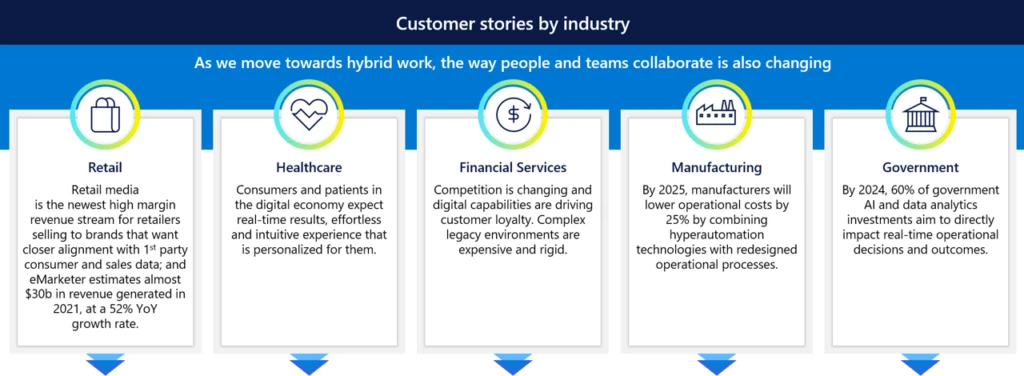
Mattress Firm Lancet Laboratories Moneris Lippert Components Gauteng
With so much to considerknowing where and how to begin is not always clear. Microsoft established the Dynamics 365 Migration Community to simplify things. Regardless of where you are in your migration journey, the Dynamics 365 Migration Community has the resources to help you make timely, informed business decisions. Visit the community today to access partner discovery resources.
The post 3 characteristics to look for in your Dynamics 365 migration partner appeared first on Microsoft Dynamics 365 Blog.
Brought to you by Dr. Ware, Microsoft Office 365 Silver Partner, Charleston SC.
This article is contributed. See the original author and article here.
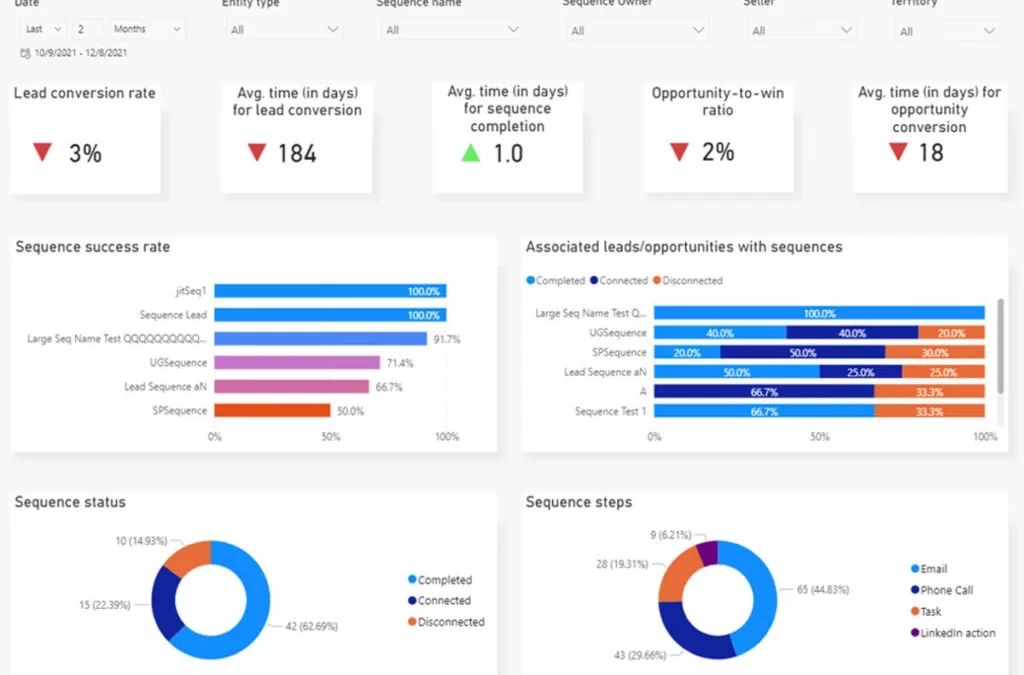
This article is contributed. See the original author and article here.
When sellers follow a predefined set of activities from day to day, they will usually be more productive. Sales managers and other experienced sellers define these best practices, or sequences, to guide sellers and ensure they follow business processes. However, these sequences must constantly evolve, and the best way to make improvements is to understand their effectiveness. Dynamics 365 Sales Premium recently announced a preview of the reporting capability for sequences.
Sales acceleration reporting (preview) offers a performance dashboard for sequences that provides sales managers with the right information to measure the efficacy of the defined sequences. The dashboard helps them compare the success rate of each sequence and analyze the effectiveness of the related activities. Key data points embedded within the metric charts help managers manage seller activities.
The administrator can enable these embedded Microsoft Power BI reports and they are available at no additional cost for customers with Dynamics 365 Sales Premium licenses.
Sequences help sales managers implement a standardized sales process. Even though each sequence reflects years of experience and input, it is necessary to constantly revise and optimize the sales processes by monitoring performance. The dashboard provides the success rates of the sequences, aligned to the business KPIs. The dashboard also helps the manager compare sequences. They can also identify poorly performing sequences through the reports. Standard filters let the manager drill into specific data.
The dashboard reports offer the following key features:
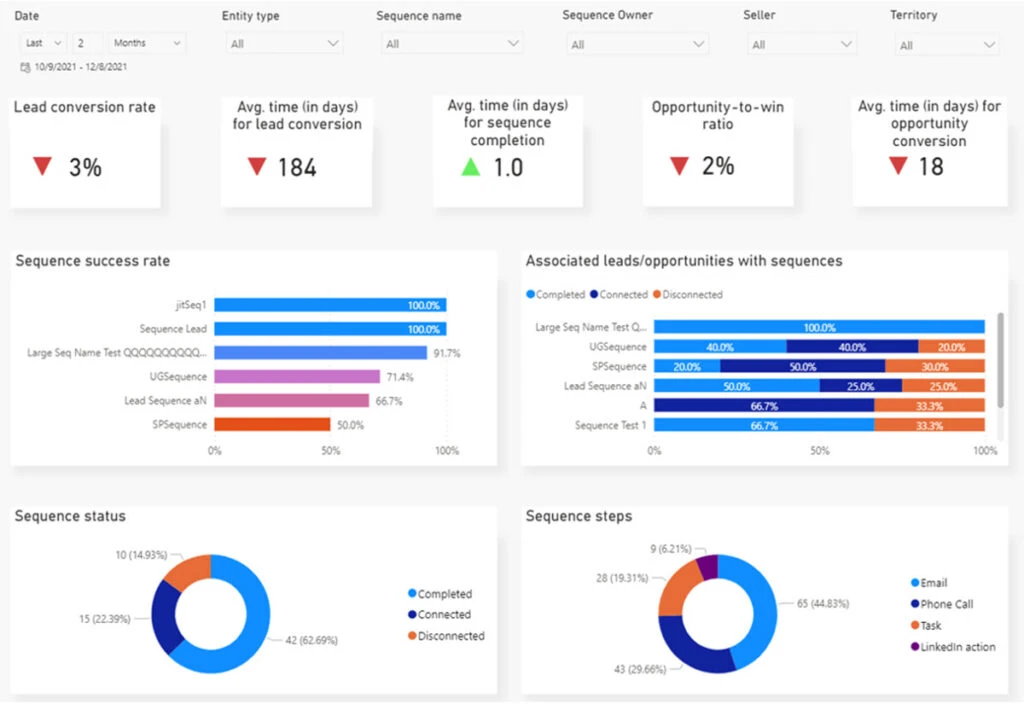
A sales manager can view the leads related to a particular sequence to monitor a seller’s activities and ensure adherence to the standardized sales processes.

The sequence stats page offers a grid view for sequences that helps managers compare different sequences and brainstorm ways that a sales process can be more productive.
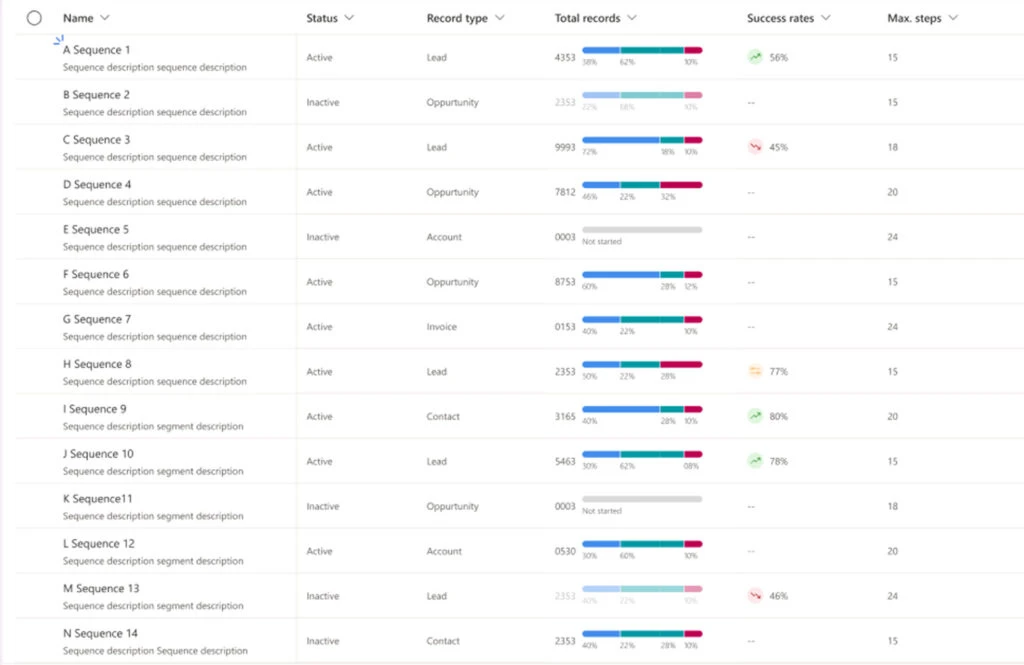
Sales managers can monitor seller activities with charts in the dashboard. They can filter activities using the following parameters:
By using these metric charts, the manager can identify the channels that are working well and see where improvements can be made. With the help of the activity status charts, the manager can easily recognize the completion rate of activities and decide where to focus to meet expectations. The chart for email engagement tracks the effectiveness of that activity.
Sales managers can find the following key insights with the reporting page:
The post Use a performance dashboard to optimize seller activities appeared first on Microsoft Dynamics 365 Blog.
Brought to you by Dr. Ware, Microsoft Office 365 Silver Partner, Charleston SC.
This article is contributed. See the original author and article here.
Now that our new Microsoft Information Governance feature, adaptive policy scopes, has reached general availability (GA), we thought it would be helpful to dive a little deeper into SharePoint site scopes. One of the most common questions we receive regarding site scopes is how administrators can use custom properties to include or exclude SharePoint sites with them. With this post, let’s take a deeper look at what custom properties are, why you may want to use them, and how to configure them.
If you are unfamiliar with adaptive policy scopes, it is an exciting new feature for Information Governance and Records Management which provides the ultimate level of flexibility when applying retention to Microsoft 365 locations. It allows organizations to meet regulatory, legal, or business requirements that demand different retention rules to apply to various departments, locations, and roles.
For more information about adaptive policy scopes, check out the following resources:
Additionally, much of the information we’ll discuss was also presented and demonstrated in our January 2022 webinar “Building Advanced Queries for SharePoint Sites with Adaptive Policy Scopes“: https://aka.ms/AdaptivePolicyScopes-AdvancedSharePoint
Out of the box, adaptive policy scopes allow you to include or exclude SharePoint sites based on indexed properties such as the site’s URL or name. One common problem admins face, however, is that those properties don’t always work well for their retention requirements. Furthermore, SharePoint sites, by default, don’t have many other queryable properties that they find useful when scoping retention policies. Many times, they require more user-centric attributes, such as region or location, to align with regulatory requirements.
For that reason, we designed adaptive policy scopes to take advantage of refinable managed properties which allow administrators to inject and query whatever custom site-level information they want, enabling powerful complex scoping scenarios. For example, an administrator can create a queryable property that references the location in which the site is used, with a value such as “France”.
The most popular of these refinable managed properties – and ideal for our location example above – is the refinable string. Because it is the most commonly used refinable managed property, we added it as a selectable option in the simple query builder of the adaptive policy scope wizard when creating a site scope:
The simple query builder can be used to quickly create queries using the most common indexed site properties.
However, there are more refinable managed properties that may also be useful to administrators such as date and integer. These aren’t available in the simple query builder, but for maximum flexibility, can be queried using Keyword Query Language (KQL) within the advanced query builder:
The advanced query builder can be used to create more complex queries using Keyword Query Language (KQL)
As you can probably guess, deciding whether to use the simple or advanced query builder will depend on the complexity of the scope, the properties which must be queried, and the operators that are required to achieve the intended result. To help understand the differences, refer to the following chart:
Before using a custom property with an adaptive policy scope, it’s important to understand how they work. There are several components that are involved and at play when creating and querying custom properties with SharePoint sites:
| Managed Property | Data Type | Supported Operators |
| RefinableString00-199 | String | = : <> * |
| RefinableInt00-49 | Integer | = : <> * > >= < <= |
| RefinableDate00-19 | ISO 8601 Date/Time | = : <> * > >= < <= reserved keywords |
The following image gives an overview of the process each custom property goes through before it can be queried using KQL from within an adaptive policy scope:
Adding a custom property initiates a crawled property which then must be mapped to a managed property to become queryable.
NOTE: Since a tenant-level crawled property is created automatically the first time a custom property is added to a site, the managed property only needs to be mapped once. After mapping, the custom property can be added to more sites and the same managed property can be used to query them all (after indexing occurs).
Now that we have a basic understanding of the various components involved under-the-hood, let’s walk through how to create custom properties that can be queried using KQL from within an adaptive policy scope.
At this time, there’s no way in the UI to add a custom property to a site property bag. So, to make the process as easy as possible, we’ve worked with the open-sourced PnP.PowerShell module team to create cmdlets designed specifically for easily adding/managing custom properties for use with adaptive policy scopes:
To get started, you’ll need to make sure you have the latest version (1.9.0+) of the PnP.PowerShell module installed. Refer to their documentation for installation instructions.
Once installed – at least the first time that you connect to your tenant using PnP.PowerShell – you’ll need to give administrative consent to use the module. To do this, you must authenticate interactively. Choose a SharePoint Online site (we will use Project Wallaby), then use the following cmdlet to connect:
Connect-PnPOnline –Url <SPOSiteUrl> -Interactive
You must first connect to PnP Online interactively to consent to required permissions.
Once connected, use Set-PnPAdaptiveScopeProperty to add a custom property to the site’s property bag.
To provide a real-world example, let’s consider the following scenario:
Contoso wants to create a retention policy that applies to all project sites in the marketing department. The policy will apply indefinite retention while the project is active.
Given the above scenario, it would make sense to add three new custom properties to the property bag of all applicable sites. For our first site, we’ll use the marketing department’s Project Wallaby site:
NOTE: You don’t need to add ‘custom’ to the property name, but it can help distinguish custom properties from other properties.
Set-PnPAdaptiveScopeProperty –key customDepartment –value Marketing
Set-PnPAdaptiveScopeProperty –key customSiteType –value project
Set-PnPAdaptiveScopeProperty –key customProjectEndDate –value 2023-01-01
We can then use Get-PnPPropertyBag to verify the properties were successfully added:
Use Get-PnPPropertyBag to verify the custom properties have been added.
As we described above, once we’ve added the custom properties to the site’s property bag, the SharePoint search crawl process will generate a new tenant-level crawled property (if one doesn’t already exist). This requires the site to be crawled, so it may take some time. Once the crawled property has been generated, it can be viewed within your tenant’s SharePoint search schema:
https://<tenant>-admin.sharepoint.com/_layouts/15/searchadmin/ta_listcrawledproperties.aspx?level=tenant
A tenant-level crawled property is created for each custom property added, but they are not mapped to any managed property.
In the above image, notice that there are not any current mappings. This is where we would need to map each crawled property to a refinable managed property which will assign a data type and enable the ability to query the data based on that type.
To do that, select one of the newly created crawled properties to open the crawled property settings. Then, within “Mappings to managed properties”, search for and choose an applicable refinable managed property. You’ll need to do this for each custom property that was created, but as mentioned before, will only need to do it once for each.
In order to make a crawled property queryable, you must map it to a managed property which gives it a data type.
It is important to emphasize that the refinable property is what gives the crawled property a data type that we can then query. So, when deciding which refinable managed property to use, consider how you want to query the object, then choose the type that makes the most sense. For example, a date supports more operators than a string. Given the 3 properties/values we created, we can map them to the following managed properties:
| Custom Property | Data | Data Type | Managed Property |
| customDepartment | Marketing | String | RefinableString00 |
| customSiteType | Project | String | RefinableString01 |
| customProjectEndDate | 2023-01-01 | DateTime | RefinableDate00 |
The mappings can be viewed from the tenant-level crawled property page.
After creating the mappings, crawling of the site is again required before being queryable, which may take some time.
Finally, now that we’ve added the custom properties and mapped them to refinable managed properties so that they can be queried, we can create the query for use in an adaptive scope.
If we had chosen to use only refinable strings then the simple query builder would be fine to use – but since we chose to use a refinable date too, we must create a KQL query for use in the advanced query builder.
Remembering the example scenario outlined above – and given the custom properties we created – we could query the mapped refinable managed properties using the following KQL query:
RefinableString00=Marketing AND RefinableString01=project AND RefinableDate00>today
Once an adaptive policy scope is created, it generally takes about 24-48 hours for it to start populating with sites that match our query. Since that is a while to wait to simply confirm the query is valid, we can first test it using SharePoint search by navigating to:
https://<tenant-name>.sharepoint.com/Search
SharePoint search can be used to verify/validate KQL queries.
Now that we’ve confirmed it works, we can confidently create a new adaptive policy scope using the same KQL query that was tested above within the advanced query builder of the new adaptive scope wizard:
Creating a SharePoint site scope using KQL
As you can see, this process is very manual and would be extremely time-consuming to perform over a large number of sites.
For existing sites, we have an example script that can export all existing sites and allow you to set a custom property on any number of them: https://aka.ms/BulkPropertyBagScripts
For future sites, we recommend implementing a site provisioning solution to start integrating custom properties into your workflow. PnP has a provisioning framework, as one option: https://aka.ms/PnP-ProvisioningFramework
—
We hope you found this blog post useful. Thank you for reading!
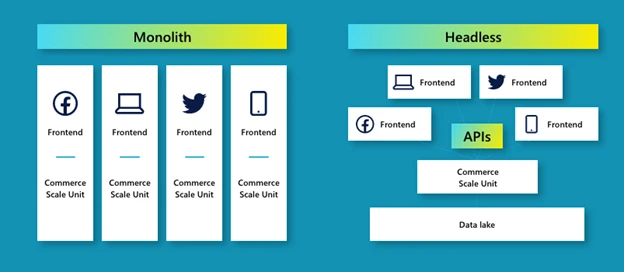
This article is contributed. See the original author and article here.
Over the last 15 years, social media has grown rapidly, both in reach and in impact on our daily lives. Facebook reached one billion users worldwide in 2012, only eight years after launch, and has approximately 2.89 billion active users today. Instagram boasts nearly 140 million active users, while 100 million people enjoy TikTok.1 Beyond their reach, users spend an exorbitant amount of time on social media, with 62 percent of users spending an hour or more on social media a day and 30 percent spending more than two hours.2
Whether engaging with influencers on live-streaming video platforms or viewing short-form videos on Tiktok, social media has revolutionized the way we connect with each other. They have also changed how we discover and engage with brands, unlocking new opportunities for businesses to engage with customers. And with the emergence of social commerce, they’re opening a new channel through which customers can buy products from retailers.
While the concept of linking to a product page within a social media post has been status quo for some time, consumers prefer a seamless experience that won’t disrupt their consumption. Enter social commerce, which can be thought of as the extension of the shopping experience to the realm of social media. With social commerce, users can see an item on a social media platform and purchase it without leaving the channel.
According to Statista, the value of social commerce sales worldwide in 2021 was an estimated $732 billion and is projected to grow to $2.9 trillion by 2026.3 The continued growth of social media and the coming rise of social commerce will allow companies to add new revenue streams by meeting their customers on the platforms they prefer. The opportunity is not, however, without challenges and brand leaders need to understand how the right technology solutions can help them on their social commerce journey.
Given the vast audiences that social media can reach, it makes sense that businesses first gravitated to social media primarily as a means of building awareness for their brand. Today, more and more brands are moving beyond awareness by embracing shoppable Facebook pages and Instagram posts, and the reason is clear: in 2021, 63 percent of social media users reported that posts by a brand or company were very/somewhat influential in their purchasing decisions, according to Sprout Social.4
In addition to making purchases through social media platforms, the forms of media that brands are using to engage consumers are expanding, as well. For example, live-streaming, which draws audiences by combining live entertainment with the ability to purchase directly in a platform, has taken off in China. Given the direct-to-consumer benefits, live-streaming will likely be a hit in other markets soon.
These trends point clearly to the need for brands to be able to offer content across multiple social media platforms and multiple media types to keep up with their customer’s buying preferences. The challenge for many organizations will be overcoming the constraints of their legacy commerce solutions to capitalize on this evolution.
As omnichannel retail took flight around 2010, retailers came to realize that the first-generation e-commerce platforms were not agile enough to keep pace with the evolution of shoppers’ needs. Whether in-store or online, today’s shoppers want consistent messaging, seamless and sensory experiences across devices, and personalized customer service. Plus, they want unprecedented levels of convenienceall points we’ve discussed in previous blog posts.
Now, with the rise of social commerce, retailers face an increased proliferation of customer touchpoints, such as offering the ability to purchase a product via an influencer’s TikTok video, through a shoppable post on Instagram, or in the virtual world presented in AR/VR. Each of these touchpoints can be thought of as a different “front-end” experience that “back-end” systems, such as content management systems (CMS) and traditional enterprise resource planning (ERP) systems, must serve and connect to enable social commerce.
Delivering social commerce to multiple front-ends in this manner is challenging for organizations that are unable to leverage a single CMS or are still utilizing monolithic, content-led commerce architectures. Headless commerce solves these challenges by disconnecting the front-end experiences from the back-end systems that enable them. In this way, headless solutions give retailers the ability to provide features like platform-specific content and layout management, personalization, content testing, and analytics. Social commerce enables an organization to deploy content on multiple social media platforms (front-end) while still utilizing the same back-end systems to complete transactions. Not only does this simplify management by bringing all commerce-related activities into a single solution, but it also gives retailers the agility necessary to compete in a future of social commerce.

New social channels and customer touchpoints will continue to evolve and develop, and brands need new digital commerce approachessuch as headless commerceto provide the agility required to adapt to a fast-moving marketplace.
Microsoft Dynamics 365 Commerce is a modern, intelligent, and modular solution that can help organizations consistently deliver great customer experiences on any social channel or front-end application. This is because Dynamics 365 Commerce can utilize both headless and other modern commerce architectures to seamlessly connect enterprise systems, such as payment processing, content management, and omnichannel inventory. By connecting and unifying every facet of the customer journey, businesses are well-positioned to embrace social commerce experiences across established and emerging channels, giving them the ability to meet their customers where they are and purchase there too.
To see how Dynamics 365 Commerce can help your brand succeed in social commerce and beyond, we invite you to get started with Dynamics 365 Commerce free trial today.
Sources:
1- Statista, 2021. Most popular social networks worldwide as of October 2021.
3- Statista, 2021. Social Commerce.
4- Sprout Social, 2021. The state of social media investment: Five key takeaways for European businesses.
The post Dynamics 365 powers social shopping needs with headless commerce appeared first on Microsoft Dynamics 365 Blog.
Brought to you by Dr. Ware, Microsoft Office 365 Silver Partner, Charleston SC.
Recent Comments